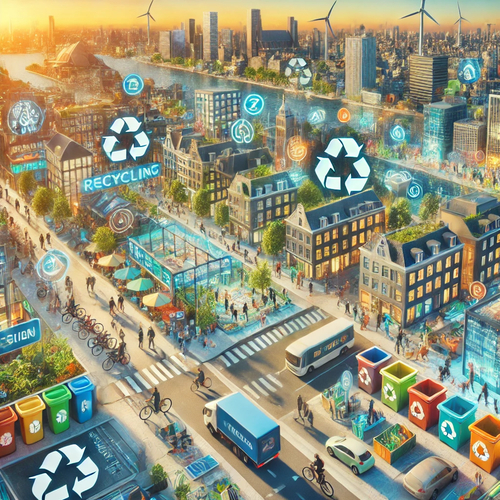The issue: Reducing, recycling and reusing single-use plastic products in urban areas will contribute to a city's circular economy. So, are circular economy principles being applied successfully for single-use plastics in Hong Kong?
Circular Economy (CE) solutions do not occur naturally; at a minimum, they require a push from an institutional or regulatory body, and an accompanying set of rules. What else is necessary for them to be a viable addition to a circular city blueprint? This research project studied the CE solutions in two cases of single-use plastics (SUPs) in Hong Kong, and the business models behind them, to learn from consumers and businesses what would make them successful.
The first case took advantage of a pilot being run by a consortium to provide compensation per returned SUP bottle. By comparing the return rate before, during and after the pilot, the study found that the amount of bottles returned increased as the compensation increased. However, removing the compensation led to a large drop in return rates.
A similar monetary correlation was seen in the second case, plastic shopping bags. In this situation, a price was applied to each plastic bag, to encourage re-use. There was initially a boost in re-use, followed by a drop. When the cost of a single shopping bag was increased, by more than double, re-use levels rose sharply.
The presence and level of incentives appears to be key to stimulating reuse and recycling behavior in consumers, although additional (observational) studies would be needed to shed light on how sustained the behavioral changes turn out to be. In the meantime, the study is working with several small businesses producing SUPs to understand why and how they would adapt their business practices and models in the face of efforts to encourage the reuse, reduction, or recycling of their SUP products. A critical factor already identified is the reliability of the financial subsidies underpinning Hong Kong's circular ambitions.
“What is especially encouraging is that, as companies join the Circular Economy, they are more likely to engage and learn from partner firms in the same space than before, and to proactively seek customer feedback.”
“It's not only about economics. Accessibility, or convenience, makes a huge difference to return rates of plastic bottles. If the return container is present where people do their food shopping, or along routes that they regularly take, the barrier to returning the product is much, much lower.”
Practical applications: The study has highlighted that, to be viable, CE solutions must have reliable and appropriate funding, be resource-efficient, designed with stakeholders in mind, and have learning and feedback loops built in so CE business models can be adapted and adjusted as needed.
